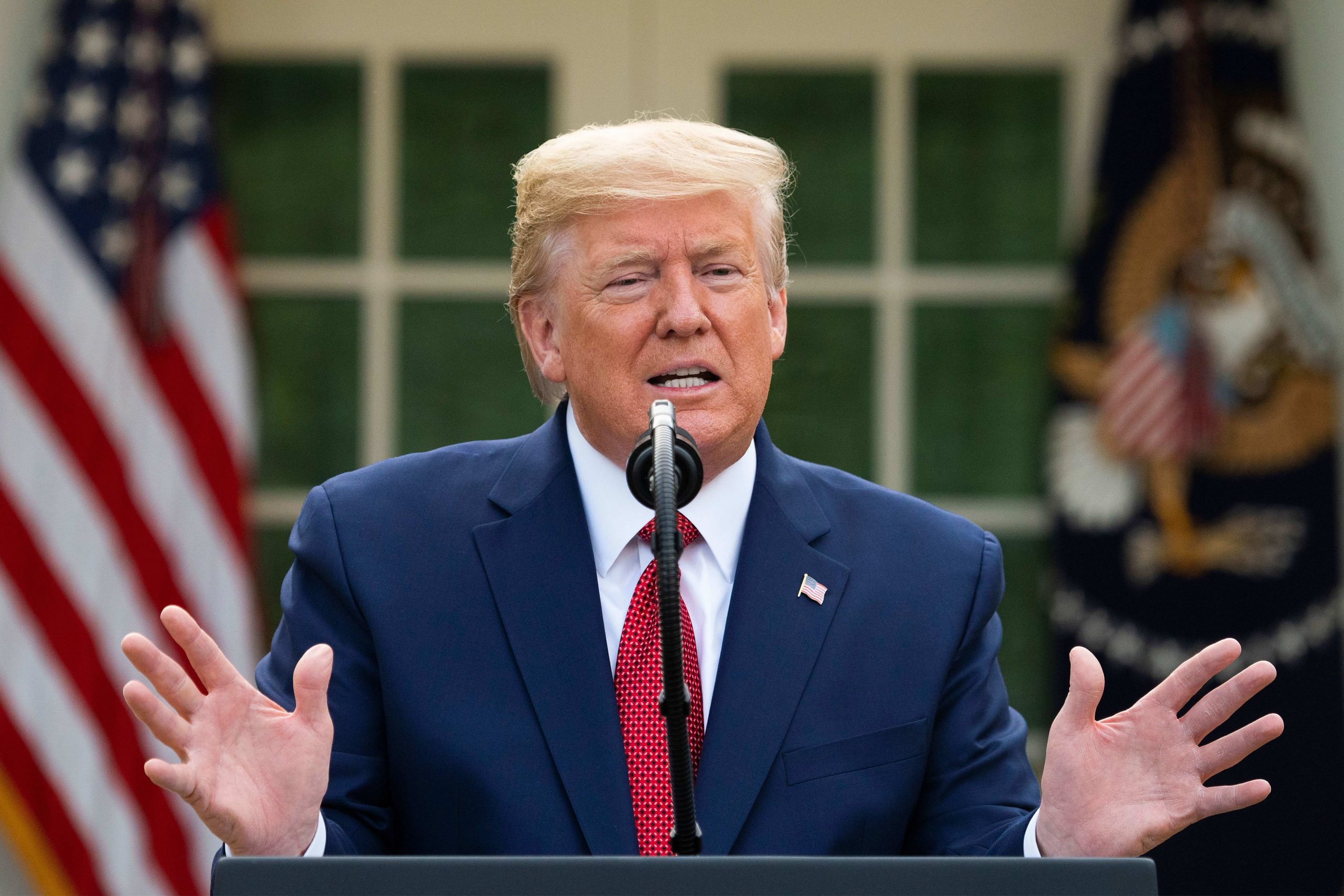US President Donald Trump speaks during a Coronavirus Task Force press briefing in the Rose Garden of the White House in Washington, DC, on March 29, 2020.
Jim Watson | AFP | Getty Images
This is a live blog. Check back for updates.
8:04 am: Stocks exposed to COVID-19 slump in premarket trading
Companies with outsized exposure to the novel coronavirus, and its spread, slumped again in premarket trading Monday after the number of U.S. cases jumped again over the weekend. Cruise line companies Carnival and Norwegian dropped 10% and 9% respectively. American, Southwest and United Airlines fell 6%, 4.4% and 8.1%. Expedia and car-rental company Hertz dropped 0.6% and 0.5%. — Franck
8:02 am: Alphabet rises on BMO upgrade
Shares of Google-parent company Alphabet rose more than 1% in premarket trading on Monday after BMO upgraded the stock to “outperform” from “market perform.” “We expect our mega-caps to be popular upon rebound, and we think there are important relative fundamental differences that nudge GOOGL into Outperform territory,” BMO analyst Daniel Salmon said in a note on Monday. The bank said it favors Alphabet over Facebook for the company’s higher exposure to larger enterprises, as well as its YouTube subscription business which is benefiting from consumers staying at home. BMO kept its 12-month price target of $1,400 on Alphabet, representing a 26% gain from Friday’s close of $1,110. – Li
7:51 am: Abbott surges after approval of five-minute test
Shares of Abbott rose 10% in premarket trading after the company received an emergency use authorization for its new coronavirus test. The test is designed to deliver positive test results within 5 minutes and negative results within 13 minutes. The company said it plans to ship the tests to some health care providers this week. — Pound
7:48 am: The US economy at a standstill, satellite imagery shows
The coronavirus pandemic has brought U.S. business and consumer activity to a halt, with every sector feeling the effects of most of the country’s workforce staying home. With few official measures available to gauge the scope of the economic damage, satellite imagery and alternative data show the widespread effects of the current nationwide isolation recommendations. The U.S. situation is stark: Airplanes are parked on unused runways, the busiest highways are empty during rush hour, resorts have become ghost towns, ports are seeing sharp drops in shipping activity and more. – Sheetz
7:46 am: Goldman says the market won’t bottom until these three things happen
For investors wondering if last week’s big bounce signaled a bottom, Goldman Sachs warned that more selling is ahead and three things need to occur before the market hits a turning point. “A three-part checklist for a sustained rally: (1)Slowing viral spread; (2) Evidence that fiscal and monetary policy stimulus is working; and (3) A bottoming in investor positioning and flows,” said David Kostin, Goldman’s chief U.S. equity strategist.
Goldman said sharp bounces like last week’s are common during bear markets. During the financial crisis, the S&P 500 experienced six bounces of 9% or more between September and December 2008, with some rallies as large as 19%. However, the actual market bottom did not occur until March 2009, Kostin said. – Li
7:43 am: Distancing guidelines extended through April
President Donald Trump announced Sunday that the social distancing guidelines from the Centers for Disease Control and Prevention have been extended until April 30. Trump said his previous statements about the country lifting the Guidelines on Easter, which is April 12, were an “aspiration.” White House health advisor Anthony Fauci said Sunday that the country could see between 100,000 and 200,000 deaths from the pandemic. — Pound
7:24 am: Dow tries to extend gains after best week since 1938
U.S. stock index futures were little changed ahead of Monday’s open as markets look to extend last week’s strength. While stocks moved lower on Friday, the major averages still managed to post gains for the week — and then some. It was the Dow Jones Industrial Average’s best week since 1938, while the S&P 500 and Nasdaq Composite registered their largest weekly jump since 2009.
Investors cheered the $2 trillion stimulus package aimed at combating the coronavirus-induced economic slowdown, as well as actions from the Federal Reserve, which include an open-ended asset-purchase program.
But volatility remains the name of the game. Some Street strategists say the bottom is in, while others believe stocks are in for more pain ahead as the worldwide economic impacts of the pandemic continue to reverberate. The United States now has the greatest number of coronavirus cases worldwide, and on Sunday night President Donald Trump said he was extending the national social distancing guidelines to April 30. He had previously said he hoped the economy would “open” back up by Easter Sunday on April 12.
On Monday, the Dow was set to open 25 points lower, while stock futures pointed to small gains for the S&P 500 and Nasdaq. Futures were volatile once again in overnight trading. – Stevens
CNBC’s Michael Sheetz and Thomas Franck contributed reporting.
Subscribe to CNBC PRO for exclusive insights and analysis, and live business day programming from around the world.


 Signal2forex.com - Best Forex robots and signals
Signal2forex.com - Best Forex robots and signals




